When Buffalo Bill brought his Wild West show to Scotland
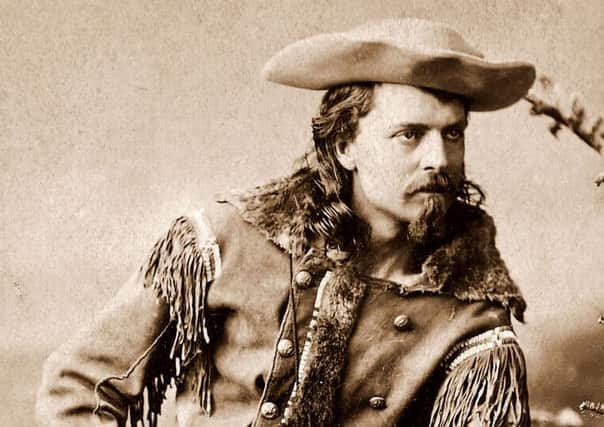

Over the course of six international sojourns in 465 different locations, Cody performed at numerous Scottish venues as part of two tours of Scotland including Glasgow, Edinburgh, Aberdeenshire and the Borders.
But it was Cody’s performances during his first visit to Scotland, in Glasgow in late 1891 and early 1892, that really put the showman in the public eye.
Advertisement
Hide AdAdvertisement
Hide AdWith performances held at the East End Exhibition Buildings at Dennistoun, from 16 November 1891 until 27 February 1892, Cody and his cohorts were making headlines before the run of shows had even begun - undoubtedly carefully orchestrated publicity stunts to try and boost attendances at the specially-constructed 7,000-capacity Glasgow venue - although there were numerous problems that delayed the start of the run as well.
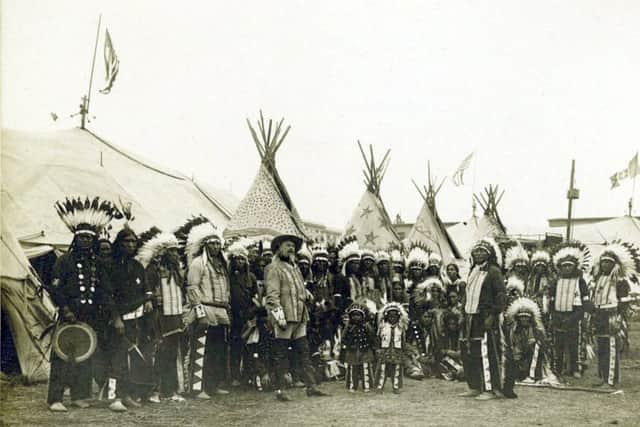

Buffalo Bill and the Old Firm
During the three-month stint, Cody turned up at a Rangers match, sent a team of cowboys to play in a charity match at Parkhead and gave money to child beggars in George Square.
A report in the Scottish Sport newspaper, from 10 November 1891, referred to Cody’s appearance at Ibrox stadium, for a Glasgow Cup quarter-final match between Rangers and Queen’s Park held on 7 November.
Getting word that more than 12,000 people were due to attend the match in Govan, Cody arrived at the stadium unannounced, in full Western gear, where he was ‘enthusiastically received’.
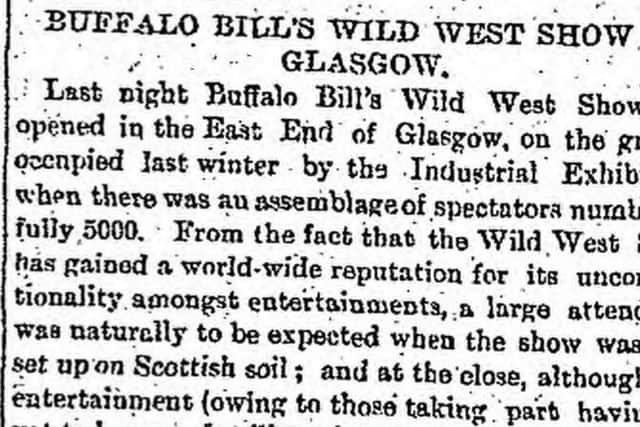

“Ibrox was filled with congratulations. The club’s staunch friends and loyal supporters, Bailies Primrose and Guthrie, received a hearty recognition on their first appearance since their ‘creation’.
Haddow, the ‘light blue’ goalkeeper, who was married the previous evening - plucky lad - also came in for a mild ovation, and the boss of the Wild West was also enthusiastically received.
“Col. Cody was taken into the pavilion at half-time, and introduced to both teams. Probably he gave them an invite to the ‘Wild West’ in the East End.”
Advertisement
Hide AdAdvertisement
Hide AdCunningham believed Cody deliberately arrived late so the crowd could get a good look at him in all his glory, he told The Scotsman in 2007.
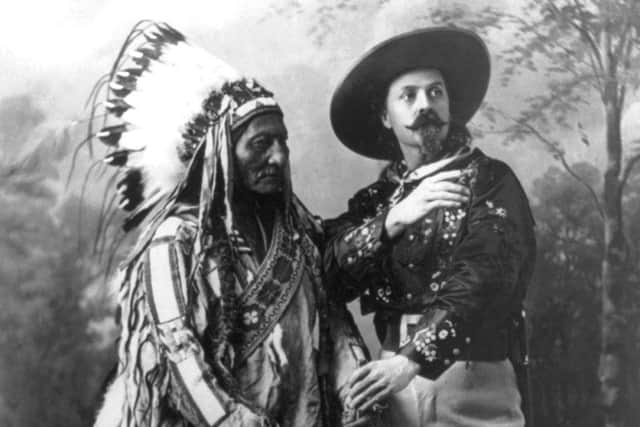

He added: “Buffalo Bill knew virtually nothing about football, but he was a master showman and publicist, and wanted to turn up at the biggest game in town.
“It would be like the biggest Hollywood star turning up unannounced at a match today.
“I believe he turned up late deliberately so the whole crowd could watch him striding towards his seat in his big white cowboy hat.”
Not content with making an appearance at Ibrox, Cody sent his right-hand man, Major John M Burke, to Parkhead for a friendly match on 1 Jan 1892 between Celtic and Dumbarton.
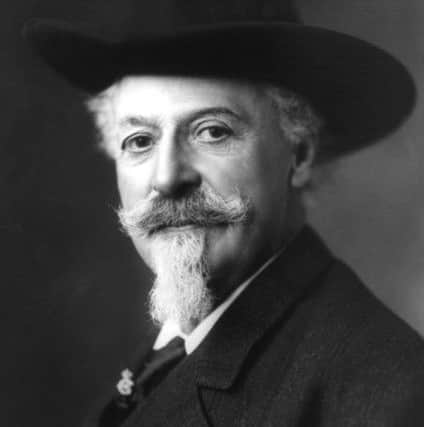

Burke was enlisted to help kick off the match, which Celtic lost 8-0. The scoreline remains the club’s record home defeat to this day.
The Scotsman made a passing reference to Burke getting the match under way: “These teams met at Parkhead, Glasgow, on New years day and played before 15,000 spectators. Buffalo Bill’s manager Major Burke kicked off.”
‘Charging Thunder’ jailed for assault
Advertisement
Hide AdAdvertisement
Hide AdIt was an eventful trip for Cody and his troupe - one of the travelling Native Americans, named Charging Thunder, was detained and thrown in Barlinnie jail for assaulting another member of the show with a club.
The Scotsman reported on Charging Thunder’s trial at Glasgow Summary Court: “‘Charging Thunder’, one of Buffalo Bill’s hostages from the American Government, was taken before Sheriff Birnie, in the Glasgow Summary Court, on a charge of having, on the 31st December last [1891], in the Wild West Show at Glasgow, assaulted George Crager, Sioux interpreter, by striking him on the head and neck with an Indian club.
“‘Charging Thunder’ pled guilty, and it was stated on his behalf that he was only 23 years of age, and was usually one of the quietest members of the Wild West Show, but in common with other Indians, the slightest drop of drink infuriated him, and on the night in question he had obtained whisky in a public-house in mistake for lemonade, which he asked for. He entertained no malice towards the interpreter.


“The Sheriff said that the assault was of so serious a stature that had ‘Charging Thunder’ not been a stranger he would have sent him to prison for a long period, but under the circumstances he would limit the imprisonment to 30 days.
“He thought it a great shame that publicans should supply these Indians with whisky.”
Philanthrophy in George Square
Another tale about Cody himself was found in the Glasgow Evening News of 11 November 1891. A ‘correspondent’ told of encountering a ‘distinguished looking gentleman, with a somewhat outré appearance’, who bought a pile of newspapers from an old lady in George Square and noticed a shoeless young girl helping her to sell the papers.
The account continued: “Pointing to her shoeless feet, which evidently attracted his attention on the cold night, he asked the old woman what it would cost to get a pair of shoes for the child, and then handed her the amount she named. He paid for his papers, gave the old lady a sixpence for herself, handed a silver coin to another poor body in the neighbourhood, and then went off with a smile on his face, that showed he felt pleased at being able thus unostentatiously to do a kindly action. On inquiring who the gentleman was, the old woman replied - “Sure that’s Buffalo Bill, an’ he has bought his papers from me the last two nights. God bless him.”
Advertisement
Hide AdAdvertisement
Hide AdThe Glasgow extravaganza was quite something, by all accounts, comprising six dramatic episodes making up a wider show titled The Drama of Civilization. Included as part of this was a re-enactment of the Battle of Little Bighorn and shooting displays by Cody himself and noted sharpshooter Annie Oakley.
As the Wild West Show’s run came to an end in late February 1892, with big crowds turning up for every performance, Cody sent a team of cowboys to play local amateur outfit Brandon, in a charity match at Parkhead on 25 February.
The exact score is unknown but the cowboys are known to have lost the match.
‘Ain’t she a beaut!’
Although the final performance was held on 27 February, the last performers didn’t leave Glasgow until nearly two months later.
Other notable moments from the tour included Cody attending the Court of Session in Edinburgh on a day off, causing a stir as he took a seat in the public gallery in full regalia, as well as a visit to the Palace of Holyroodhouse.
He is also reported to have climbed Calton Hill, and on seeing the view of Edinburgh from the summit, shouted: “Ain’t she a beaut!”
Of those that were left, the Cowboy Band - who provided the music at the Wild West Show - teamed up with the Alberger Troupe of Tyrolean Vocalists and around 12 Indians, and embarked on a five-date tour of Lanarkshire and Renfrewshire.
Advertisement
Hide AdAdvertisement
Hide AdPerformances were held in Greenock Town Hall, Coatbridge Temperance Hall, Hamilton Victoria Hall, Govan Hall and Paisley Theatre Royal.
Buffalo Bill returned to Scotland for a wider tour in 1904, with the first performance taking place in Hawick, on 26 July 1904, and the final performance being held in Dumfries on 14 September.
The lengthy tour had taken in venues including Edinburgh, Arbroath, Fraserburgh, Inverness and Ayr.
In Dundee, firefighters were called to put out a blaze in a goods yard, most likely caused by one of Cody’s trains passing through.
Cody’s visit to the north east - Aberdeen, Peterhead and Fraserburgh - actually had an adverse effect on the fishing industry, as workers abandoned their trawlers to attend the performances. The price of fish reportedly sky-rocketed on the days following Cody’s shows in the region.
The man and the legacy behind the sobriquet
For all the rootin’-tootin’ extravagance of his stage show, there was more to Cody than cowboys and sharpshooting.
Born in Iowa in February 1846, William F. Cody began working at the age of 12, on a wagon train. The following year he got involved in the gold rush in Colorado. By the age of 15, he was reportedly riding for the Pony Express - although there remains doubt over the veracity of this claim, with some suggesting Cody may have elaborated elements of his past for publicity.
Advertisement
Hide AdAdvertisement
Hide AdBut regardless of any fabrication, as the Buffalo Bill Center of the West say on their website: “By the end of his life, he had come to symbolize the American frontier itself.”
During the latter years of the American Civil War, Cody took on a role as a scout for the Union Army’s Seventh Kansas Cavalry and maintained his links with Kansas in 1867 as he agreed to hunt buffalo for Kansas Pacific Railroad construction workers, earning him the moniker ‘Buffalo Bill’.
Due to his standing, Cody became the go-to source for advice on matters afecting the American West. Presidents including Theodore Roosevelt, Grover Cleveland and Woodrow Wilson and many more came to Cody for counsel on American West issues. Away from his role as showman and political adviser, Cody also established a newspaper, the Cody Enterprise (still in existence as the main news source for the town of Cody in Wyoming) as well as investing in hotels, mines, coal and oil development, film makingm town building, tourism and ranching.
He also used his status to support women’s suffrage and push for fairer treatment of Native Americans.
The Buffalo Bill Center of the West carries a quote on their website attributed to Annie Oakley which perhaps best sums Cody up: “He was the simplest of men, as comfortable with cowboys as with kings.”